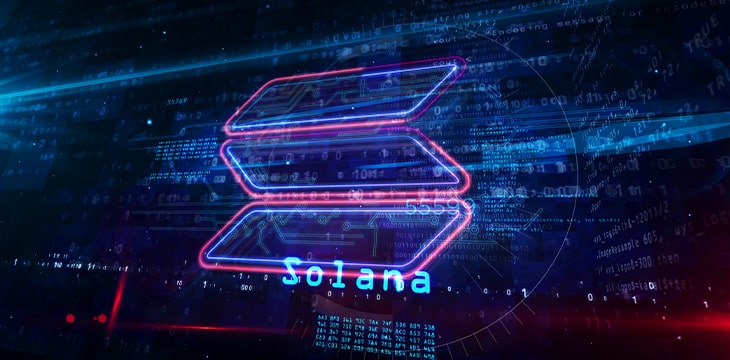
|
Getting your Trinity Audio player ready...
|
Just a few months after its network faceplanted and required a “reboot,” Solana is having more technical troubles. Congestion last week caused traffic speeds to slow dramatically, while an almost day-long downtime in September forced node operators to completely restart the network.
Although last week’s slowdown appeared to be fixed, observers today noticed a large number of failed transactions on the network, possibly over 60% of all transactions in the preceding day:
⚠️WARNING⚠️
Over the last 24 hours, more than 60% of all Solana transactions have failed. That's right, a $50 billion top #5 market cap digital asset is losing over 2000 transactions every second! Just switch it off already! pic.twitter.com/CYf1RZf3Ic
— Roy Murphy (@murphsicles) December 15, 2021
Is this normal for $SOL #solana #solanabeach pic.twitter.com/vrTAvUxoTF
— Diego (@InvestWithDiego) December 15, 2021
The Solana digital asset has (at the time of writing) a unit price of U.S. $165 and a market cap of over $51 billion, making it the current fifth-most-valuable digital asset.
As Solana continues to gain attention from backers such as Sam Bankman-Fried and grow, the issues have raised serious concerns at the network’s ability to scale reliably/securely—and throughput and scaling are Solana’s two biggest selling points.
It echoes Ethereum‘s problems of a few years ago, when ICOs and popular apps like CryptoKitties caused massive transaction pileups. Ethereum has never quite recovered from these issues, promising major protocol changes and scaling solutions to fix the problem long-term… at some future point.
Delays causing delays
The latest network problems have caused at least one Solana project, MeanFi, to postpone its launch for another week to avoid sending yet more traffic over the network:
https://twitter.com/meanfinance/status/1470806814518353930
The Solana user community was grateful for this small reprieve:
https://twitter.com/RunningSamadhi/status/1470889894176337921
However, reports indicate other developers are dissatisfied at the drop in confidence Solana’s repeated glitches have caused, complaining of a lack of transparency at the decision-making and at protocol developers’ group Solana Labs as well as expressing frustration that new problems keep appearing. Words like “reboot,” “downtime,” “transaction failure” and “hard restart” generate extremely bad press and aren’t the ones people want to see as they’re prepared to inject millions of dollars into a relatively new, fast-growing blockchain financial system.
Solving problems that have already been solved
Solana’s big deal, and the source of most of its marketing hype, is its massive transaction throughput. Claims of 50,000 transactions per second and 400 millisecond block times appear to make it perfect for efficiency in games and gaming assets, IoT applications, NFT trading, and cheap/fast payments—the same kinds of applications BSV is aimed at running.
It also shares some technical similarities with BSV in the way it leverages parallelization and horizontal scaling, and a preference for keeping all its transaction data on-chain.
The main difference is that BSV actually works, and has had a similar scaling ability since it first launched in 2009. External reorg attacks by opponents notwithstanding, BSV has performed almost flawlessly for many years and has scaled efficiently since launch of the Genesis protocol version in early 2020. It has never simply failed of its own accord, and definitely has never needed a reboot.
Solana utilizes a novel consensus mechanism that combines proof of stake (PoS) with something called “proof of history” (PoH). PoH requires network nodes to remain constantly in sync, something it’s obviously struggling to do. Solutions to the problem have included a new system to observe network state, which would require alterations to Solana’s architecture and would by nature be a centralized system.
BSV, on the other hand, has been running on a solid proof of work (PoW) base for 12 years. Despite claims that PoW is energy inefficient, no blockchain network has found another consensus mechanism that matches its security, thanks to built-in economic incentives that go far beyond the code itself. Since BSV has unbounded scaling capacity, this also reduces concerns about the energy-use tradeoff—the more transactions, the more useful it becomes, justifying the amount of energy required.
MNP is one of Canada’s Big 5 consulting firms and published a report titled “The search for a more efficient Bitcoin” last month, which found BSV to be the most efficient due to its unbounded transaction processing capacity. The report, which compared models and real-world data from BTC, BCH and BSV, concluded, “So long as the size or number of transactions on the BSV network exceeds the limitation of the other protocols, BSV is the most efficient in this group.”
Everyone’s always looking for the latest and greatest new thing in blockchain, but usually the original solution proves the best and most stable model. Rather than rushing to try new systems with faulty architecture that must be rebuilt on the fly after problems arise, it’s better to stick with systems that have proven themselves worthy over a long time.
Watch: CoinGeek New York panel, Blockchain: The Future of Technology Building on Achievements of the Past
https://www.youtube.com/watch?v=lK8-86QLmIs
Recommended for you
Lorem ipsum odor amet, consectetuer adipiscing elit. Elit torquent maximus natoque viverra cursus maximus felis. Auctor commodo aliquet himenaeos fermentum
Lorem ipsum odor amet, consectetuer adipiscing elit. Accumsan mi at at semper libero pretium justo. Dictum parturient conubia turpis interdum

 11-14-2024
11-14-2024 


